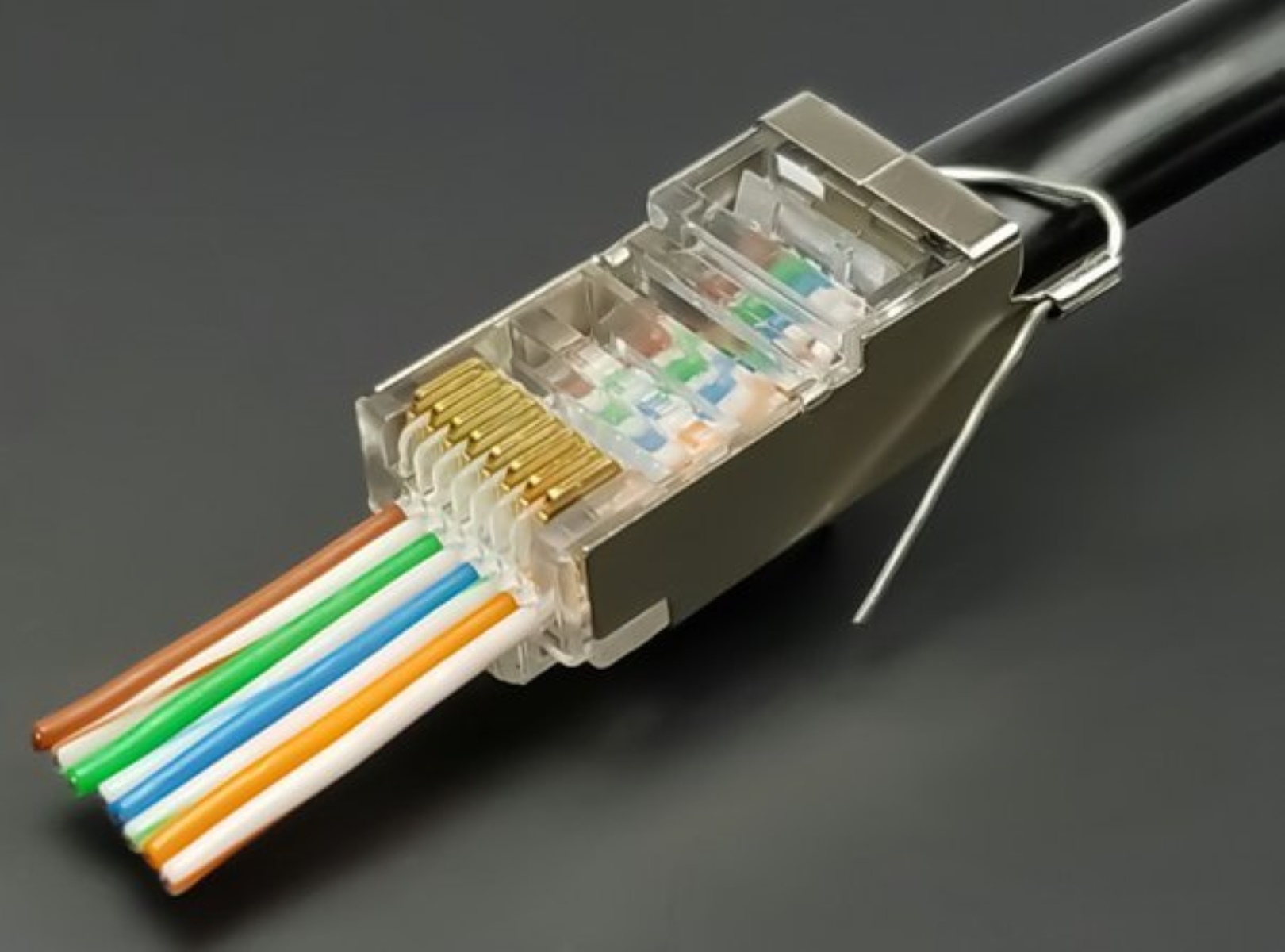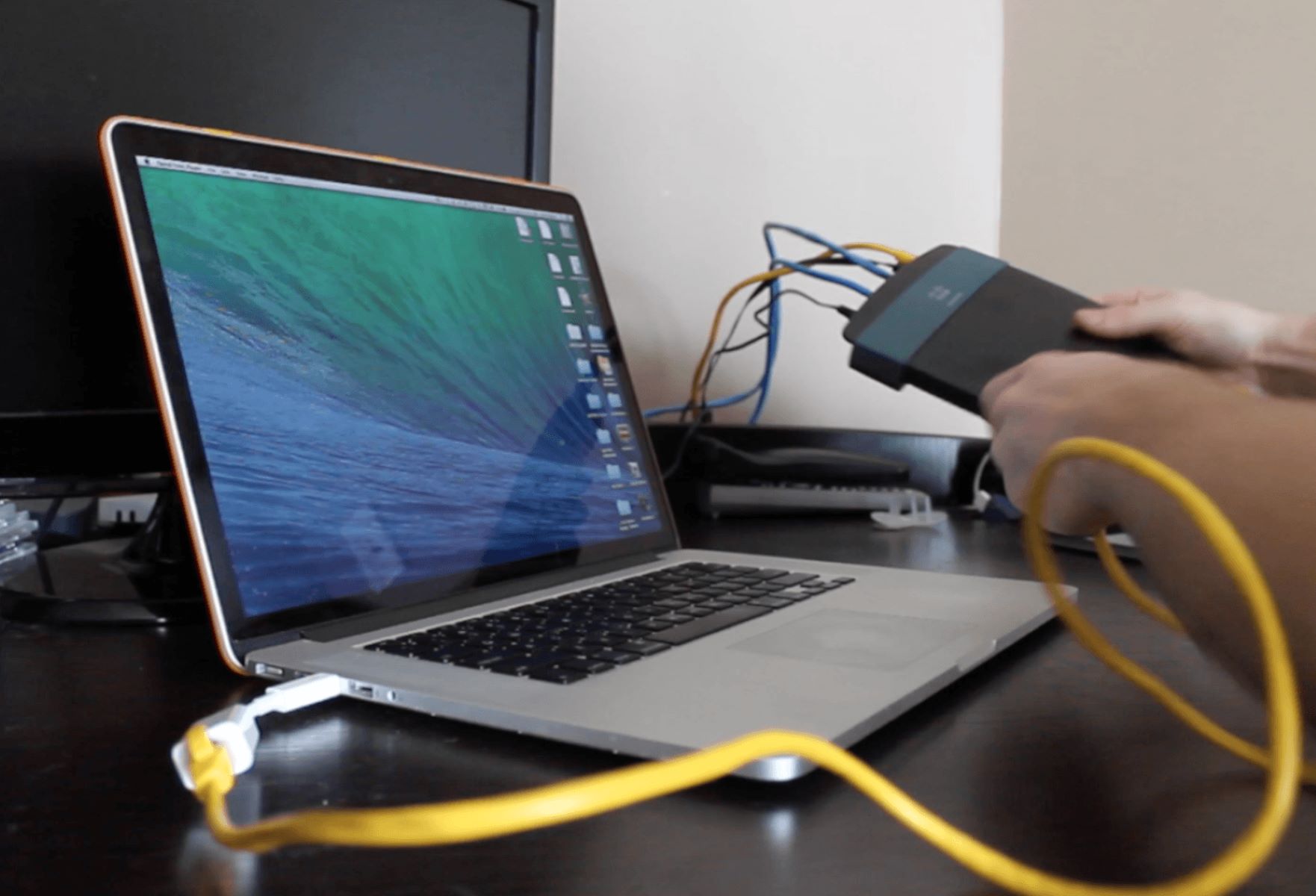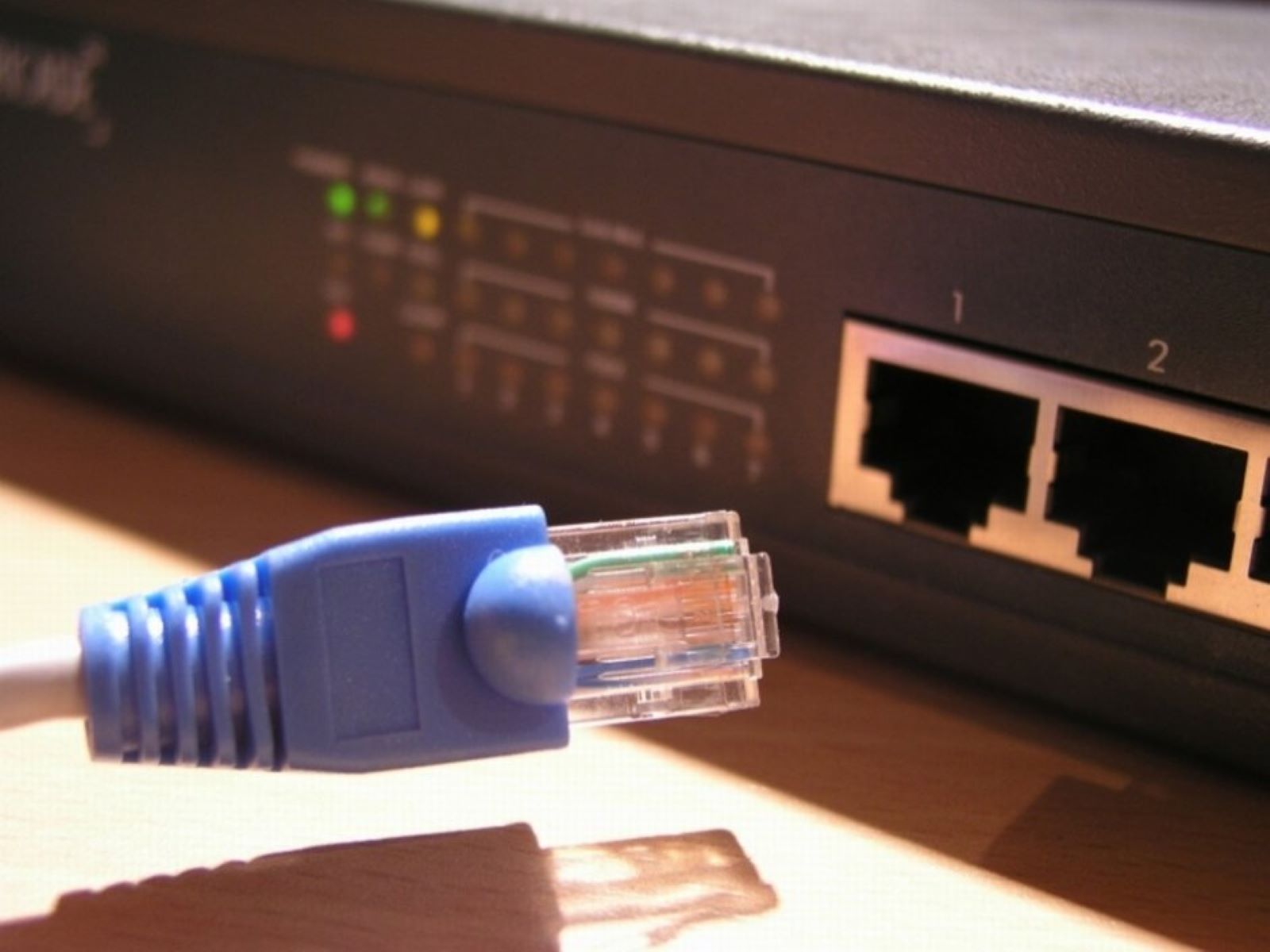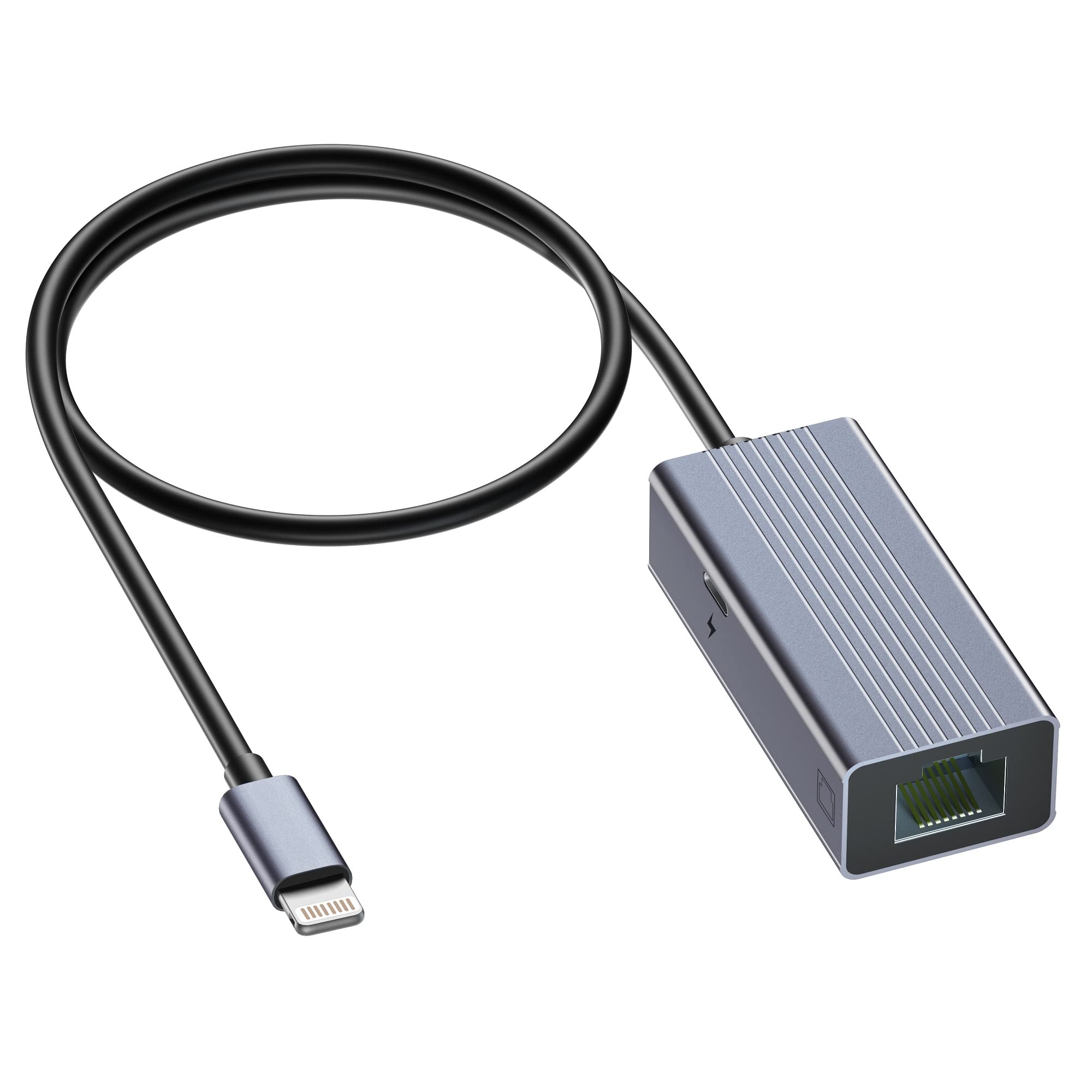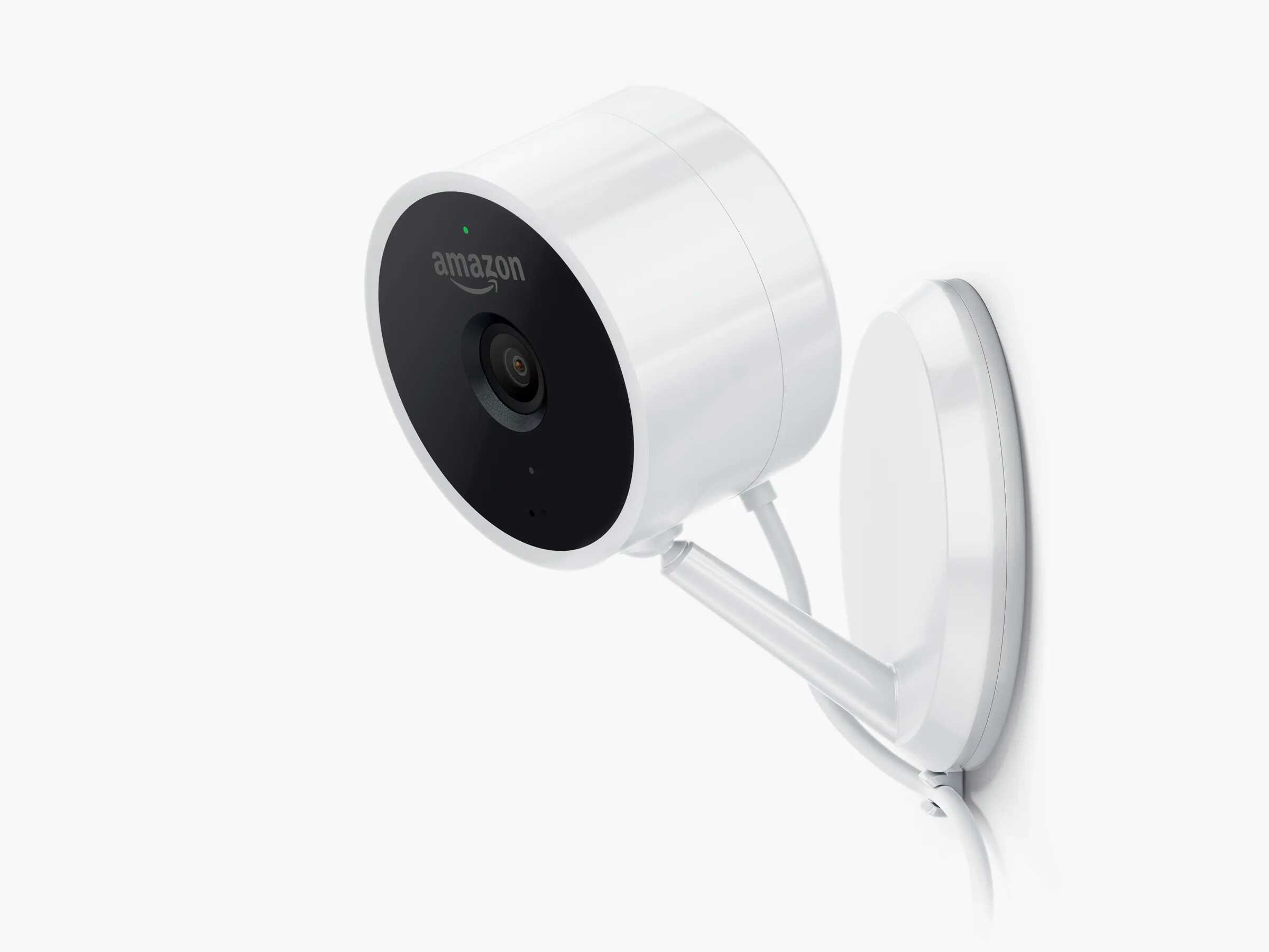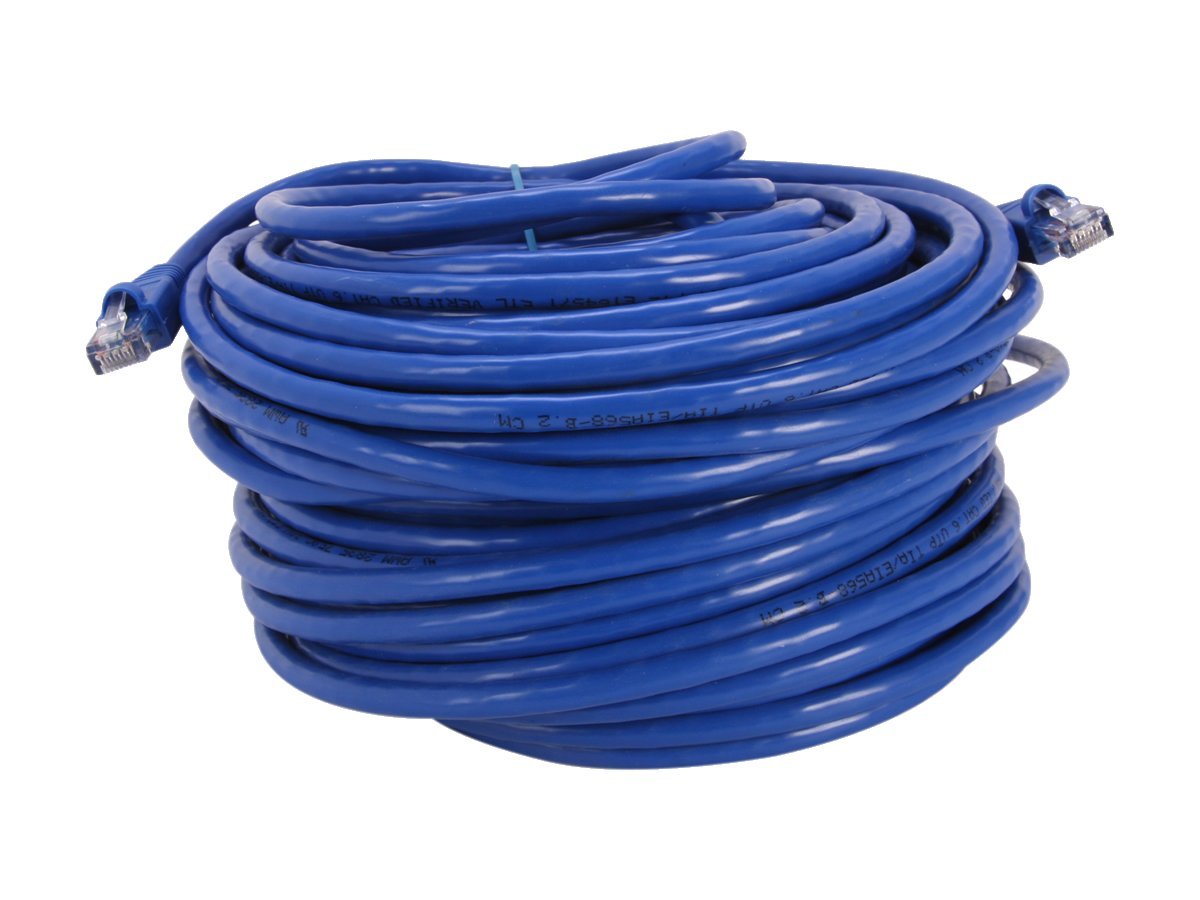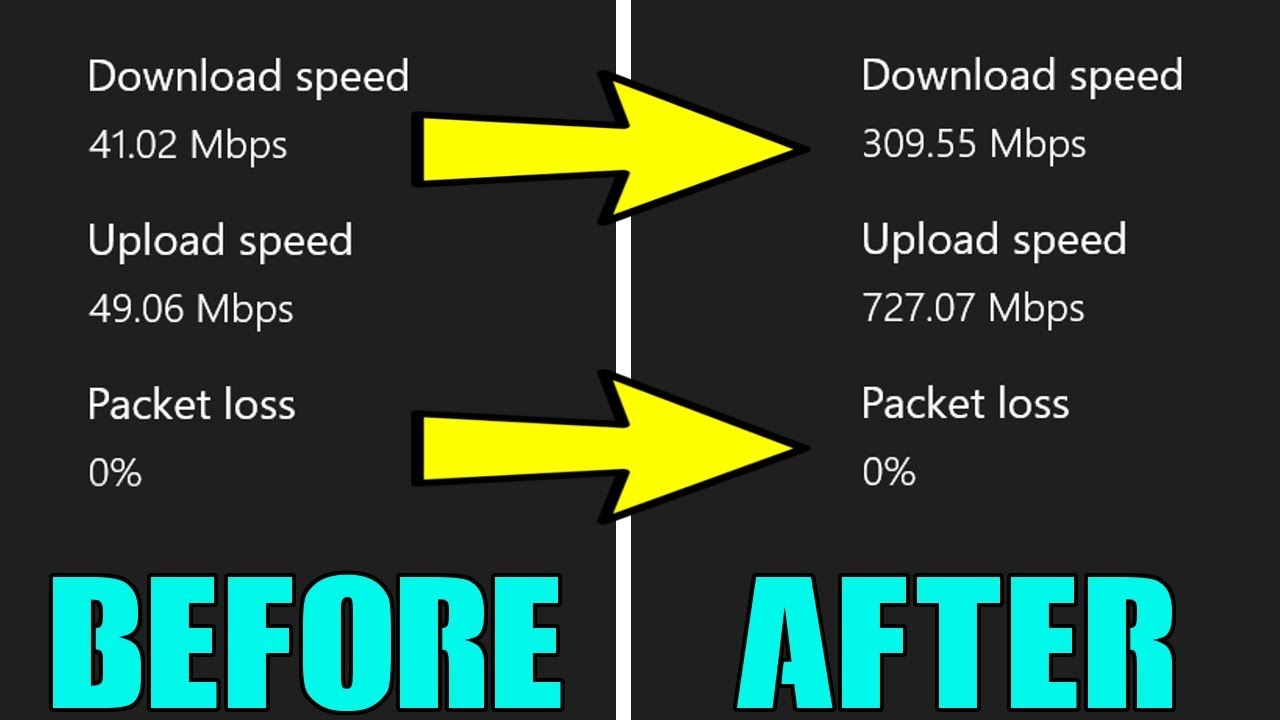Common Causes of Ethernet Disconnects
Experiencing frequent Ethernet disconnects can be frustrating, especially when you depend on a reliable internet connection for work, gaming, or streaming. Understanding the common causes of Ethernet disconnects can help you troubleshoot and resolve the issue. Here are some of the primary reasons why your Ethernet connection may be dropping:
-
Loose Ethernet Connections
One of the most common causes of Ethernet disconnects is loose connections. Over time, Ethernet cables can become loose at either end, resulting in an unreliable connection. Make sure that the Ethernet cable is securely plugged into both your computer and the router or modem.
-
Faulty Ethernet Cables
If your Ethernet cable is damaged or worn out, it can lead to intermittent disconnections. Check the cable for any visible signs of damage, such as frayed or bent connectors. Consider replacing the cable if necessary.
-
Interference from Other Devices
Electromagnetic interference from other electronic devices, such as cordless phones, microwaves, or even neighboring Wi-Fi networks, can disrupt your Ethernet connection. Keep your modem and router away from potential sources of interference.
-
Network Card Issues
Problems with your network interface card (NIC) can also cause Ethernet disconnects. Ensure that your NIC is functioning properly and that the appropriate drivers are installed.
-
Outdated or Incompatible Drivers
Outdated or incompatible network card drivers can lead to connectivity issues. It’s important to keep your drivers up to date or consider rolling back to a previous version if you suspect compatibility problems.
-
Power Management Settings
Power management settings on your computer or network card can sometimes interfere with the Ethernet connection. Adjusting the settings to prevent the system from turning off the Ethernet device can help resolve disconnection problems.
-
Network Overload
If multiple devices are simultaneously using an excessive amount of bandwidth, it can strain your network and lead to intermittent disconnections. Consider reducing the network load by pausing or disconnecting unnecessary devices.
-
Router or Modem Problems
A faulty router or modem can be a common culprit behind Ethernet disconnects. Ensure that your router or modem is functioning correctly and that it’s running the latest firmware.
-
ISP Issues
Your internet service provider (ISP) may encounter occasional network problems or perform maintenance, resulting in temporary disconnects. Contact your ISP to determine if there are any known issues in your area.
-
Network Configuration Errors
Incorrect network configuration settings can lead to connectivity problems. Verify that your network settings, such as IP address and DNS configuration, are correctly configured.
By identifying and addressing these common causes of Ethernet disconnects, you can significantly improve the reliability and stability of your internet connection.
Loose Ethernet Connections
One of the most common causes of Ethernet disconnects is loose connections. Over time, Ethernet cables can become loose at either end, resulting in an unreliable connection.
To address this issue, start by ensuring that the Ethernet cable is securely plugged into both your computer and the router or modem. Check that the connectors are fully inserted and not partially plugged in. Sometimes, a simple adjustment can establish a solid connection and resolve the disconnect problem.
If you’re using a modular Ethernet cable, such as an RJ45, make sure that the retaining clip is engaged. The clip should snap into place to secure the cable and prevent it from easily detaching. If the cable is not properly inserted into the connector or the clip is broken, it can lead to intermittent disconnections. Consider replacing the cable or using a different one to eliminate this potential cause.
Inspect the Ethernet port on your computer, router, or modem for any physical damage or debris that may be hindering a secure connection. If you notice any bent pins or visible foreign objects, gently straighten the pins or remove the debris using compressed air or a soft brush. Once the port is clean and undamaged, firmly insert the Ethernet cable to establish a reliable connection.
It’s important to note that while Ethernet connections can be secure, they are also susceptible to accidental dislodging. If you frequently move your computer or have cables running in high-traffic areas, consider using cable management solutions like clips or cable ties to secure the Ethernet cable and minimize the chances of accidental disconnections.
If you’ve checked and secured all the connections, but the Ethernet disconnects persist, it’s worth trying a different Ethernet cable to rule out the possibility of a faulty cable. Swap out the cable and observe if it resolves the issue. If the problem persists with multiple cables, there may be other underlying causes that need to be addressed.
By taking the time to check and secure your Ethernet connections, you can ensure a stable and reliable internet connection. This simple troubleshooting step can often resolve the issue without the need for further troubleshooting or equipment replacement.
Faulty Ethernet Cables
If you are experiencing frequent Ethernet disconnects, a faulty Ethernet cable could be the culprit. Ethernet cables can become damaged or worn out over time, leading to intermittent connectivity issues.
The first step in troubleshooting is to visually inspect the Ethernet cable for any visible signs of damage. Check for frayed or bent connectors, kinks or twists in the cable, or any other physical damage. If you notice any such damage, it’s advisable to replace the cable with a new one.
When replacing the Ethernet cable, ensure that you use a high-quality and properly shielded cable. Cat5e or Cat6 cables are recommended for gigabit Ethernet connections, as they offer better performance and reliability compared to older cable standards.
It’s important to note that longer Ethernet cables are more susceptible to signal degradation. If you are using a long cable, it’s worth considering whether it may be contributing to your disconnect issues. To test this, you can try using a shorter cable and see if the problem persists.
Another factor to consider is the cable’s connector quality. Ethernet cables with poorly constructed connectors may not make a proper connection, leading to intermittent disconnects. Always opt for cables with high-quality connectors from reputable manufacturers.
If you suspect that the faulty cable is not visibly damaged, you can try using it in a different Ethernet port to see if the issues persist. Sometimes, specific ports on routers or modems may have issues, while others work fine. By testing different ports, you can eliminate the possibility of a faulty port causing the disconnects.
If you have access to another device with an Ethernet port, such as a laptop or gaming console, you can also try connecting the cable to that device and observe if it experiences the same disconnection issues. If the issue persists across multiple devices, it’s a strong indication that the Ethernet cable itself is faulty.
In summary, faulty Ethernet cables are a common cause of disconnect issues. By inspecting the cable for physical damage, using high-quality cables, checking connector quality, and testing different ports and devices, you can identify and replace any faulty cables, restoring a reliable and stable Ethernet connection.
Interference from Other Devices
One of the culprits behind Ethernet disconnects can be interference from other electronic devices. Electromagnetic interference (EMI) from devices like cordless phones, microwaves, or neighboring Wi-Fi networks can disrupt your Ethernet connection and result in intermittent disconnections.
To mitigate interference, it’s important to keep your modem and router away from potential sources of EMI. Try to position them at a distance from cordless phones, microwave ovens, and other electronic devices that may emit electromagnetic waves. Similarly, avoid placing them close to other Wi-Fi routers or access points, especially if they are on the same or nearby channels.
If you suspect that a specific device is causing interference, experiment by temporarily disabling or moving it to see if the Ethernet disconnects cease. This will help you identify the source of the interference and take appropriate measures to isolate or mitigate it.
If you live in a densely populated area or an apartment building with multiple Wi-Fi networks in close proximity, Wi-Fi interference can be a common occurrence. In such cases, switching to a less congested Wi-Fi channel or using wired Ethernet connections can help minimize interference and improve overall network stability.
In addition to EMI from electronic devices, poor cable management can also contribute to interference. Avoid running Ethernet cables parallel to power cables, particularly if they are in close proximity. Power cables can introduce electrical noise and disrupt the Ethernet signals. Whenever possible, try to route Ethernet cables away from power cables, or use shielding to minimize the impact of interference.
Using shielded Ethernet cables can also help mitigate the impact of external interference. Shielded cables are designed with an extra layer of protection to minimize the effects of EMI. They are particularly useful in environments with high levels of electromagnetic interference.
By minimizing interference from other devices and implementing proper cable management techniques, you can greatly reduce the chances of Ethernet disconnects caused by external interference.
Network Card Issues
Network card issues can often be a reason for Ethernet disconnects. A faulty or malfunctioning network interface card (NIC) can cause intermittent connectivity problems, leading to frequent disconnections.
If you suspect that your network card is causing the issue, the first step is to ensure that it is properly seated in the motherboard or expansion slot. Sometimes, a loose connection between the network card and the computer can result in unstable Ethernet connections. Gently remove and reinsert the network card to ensure a secure connection.
Next, check if the network card has the latest drivers installed. Outdated or incompatible drivers can lead to connectivity problems. Visit the manufacturer’s website or use the device manager in your operating system to check for driver updates. If updated drivers are available, install them and restart your computer to apply the changes.
If updating the drivers does not resolve the issue, you may need to consider replacing the network card. Over time, network cards can wear out or develop faults that affect their performance. Consult with a technician or contact the manufacturer for assistance in identifying and resolving any hardware-related issues.
In some cases, network card issues can be caused by conflicting software or settings. Check for any recently installed programs or changes you made to your system that could be impacting the network card’s performance. You can try disabling or uninstalling suspect software to see if it resolves the disconnect problem.
It’s worth noting that some computers have built-in network adapters on the motherboard, while others use expansion cards or USB adapters. If your computer has multiple network interfaces, you can also try switching to a different network interface to determine if the disconnects are specific to one card.
If you are using a USB Ethernet adapter, ensure that it is plugged directly into a USB port on your computer and not a USB hub. USB hubs may not provide sufficient power or stable connections for Ethernet adapters, leading to disconnections. Connecting the adapter directly to the computer’s USB port can help eliminate this potential issue.
By checking and ensuring a secure connection, updating drivers, investigating for conflicting software, and considering hardware replacement if necessary, you can address network card issues and establish a stable Ethernet connection.
Outdated or Incompatible Drivers
Outdated or incompatible network card drivers can often lead to Ethernet disconnects. Drivers are the software that allows the operating system to communicate with the hardware, including the network card. If the drivers are not up to date or incompatible with your operating system, it can cause connectivity issues.
To check for driver updates, you can visit the manufacturer’s website and search for the latest drivers for your specific network card model. Most manufacturers provide driver downloads on their support pages. Look for drivers that are compatible with your operating system version and architecture (32-bit or 64-bit).
Before installing the new drivers, it’s recommended to uninstall the existing drivers from your system. This ensures a clean installation and avoids any potential conflicts. You can uninstall the drivers from the Device Manager in your operating system. Right-click on the network card, select “Uninstall device,” and follow the prompts to remove the drivers.
After uninstalling the old drivers, install the updated drivers that you downloaded from the manufacturer’s website. Follow the installation instructions provided by the manufacturer. Once the new drivers are installed, restart your computer to apply the changes.
In some cases, the latest drivers may not be available from the manufacturer. In such situations, you can try rolling back to a previous version of the drivers. This can be done through the Device Manager by right-clicking on the network card, selecting “Properties,” navigating to the “Driver” tab, and choosing “Roll Back Driver” if the option is available.
If updating or rolling back the drivers does not resolve the Ethernet disconnects, you can try using generic drivers provided by the operating system. The generic drivers may not offer advanced features specific to your network card, but they can provide basic functionality and stability.
It’s important to note that sometimes, conflicts between network card drivers and other software or hardware components can also result in disconnect issues. If you recently installed any new software or hardware, consider uninstalling or disabling it temporarily to see if it resolves the problem.
Regularly checking for driver updates and keeping them up to date is crucial for maintaining the stability and performance of your network card. By ensuring your network card drivers are compatible with your operating system and updating them when necessary, you can help eliminate Ethernet disconnects caused by outdated or incompatible drivers.
Power Management Settings
Power management settings on your computer or network card can sometimes interfere with your Ethernet connection, leading to frequent disconnects. These settings are designed to conserve power by turning off certain devices when they are not in use. However, they can inadvertently affect the stability of your Ethernet connection.
To check and adjust the power management settings, follow these steps:
1. Open the Device Manager on your computer. In Windows, you can do this by right-clicking on the Start menu and selecting “Device Manager.”
2. Expand the “Network adapters” section to view your network card. Right-click on the network card and select “Properties.”
3. In the network card properties window, navigate to the “Power Management” tab.
4. Uncheck the box that says “Allow the computer to turn off this device to save power.”
5. Click “OK” to save the changes.
By disabling the power management feature for your network card, you prevent the system from turning off the device to save power. This ensures a continuous and stable Ethernet connection.
In addition to the power management settings on your network card, you should also check your computer’s power management settings. These settings can affect the overall power consumption and functionality of your system, including the network card.
On Windows, you can access the power management settings by following these steps:
1. Go to the Control Panel and search for “Power options.”
2. Click on “Power options” to open the power management settings.
3. Select the power plan that your computer is currently using (e.g., Balanced or High Performance).
4. Click on “Change plan settings,” then “Change advanced power settings.”
5. In the advanced power settings dialog box, locate the “Wireless Adapter Settings” or “Network Adapter Settings” section.
6. Expand the section and set the power management options to “Maximum Performance” or “Maximum Performance (Plugged in)” to ensure that the network card operates at its highest performance level at all times.
7. Click “OK” to save the changes.
By adjusting the power management settings for both the network card and the computer, you can prevent power-saving features from interfering with the stability of your Ethernet connection.
Network Overload
If you are experiencing frequent Ethernet disconnects, it is possible that your network is overloaded with too many devices simultaneously using a significant amount of bandwidth. This can lead to congestion and ultimately result in unstable connections and disconnections.
To address network overload and prevent Ethernet disconnects, consider implementing the following measures:
1. Prioritize bandwidth-intensive activities: Identify devices or applications that consume the most bandwidth, such as streaming services or large file downloads. Prioritize these activities during times when other devices on the network are not heavily in use.
2. Limit the number of simultaneous connections: If you have multiple devices connected to the network, especially during peak usage hours, try reducing the number of active connections. Disconnect devices that are not currently in use or pause bandwidth-intensive activities on some devices to alleviate network congestion.
3. Upgrade your internet plan: If you consistently experience network overload and disconnects, you may need to consider upgrading your internet plan to a higher bandwidth or faster speed package. This will provide you with more capacity to handle simultaneous connections and bandwidth-intensive activities.
4. Implement Quality of Service (QoS) settings: Many routers and network devices offer QoS settings that allow you to prioritize certain types of traffic or devices over others. By assigning higher priority to critical devices or applications, you can ensure a more stable connection for those activities.
5. Monitor and manage your network usage: Use network monitoring tools or router features to keep an eye on your network’s overall usage. Identify devices or applications that are consuming excessive bandwidth and address them accordingly. You can set up bandwidth quotas or schedules to prevent certain devices or applications from monopolizing the network.
6. Consider wired connections: If possible, use wired Ethernet connections instead of Wi-Fi for devices that require a stable and reliable connection. Wired connections typically offer better performance and can help mitigate the effects of network overload.
7. Upgrade your router: Older or entry-level routers may struggle to handle heavy network traffic. Upgrading to a more advanced router with better performance and features, such as dual-band support or MU-MIMO technology, can help mitigate network overload and improve stability.
By implementing these measures, you can alleviate network congestion, avoid overloading your network, and reduce the occurrence of Ethernet disconnects. Remember that proper network management and optimization are key to ensuring a stable and reliable connection for all your devices.
Router or Modem Problems
A problematic router or modem can often be the cause of Ethernet disconnects. These networking devices act as the gateway between your local network and the internet, and any issues with them can result in unstable connections and frequent disconnects.
To troubleshoot router or modem problems, consider the following steps:
1. Restart your router and modem: Sometimes, a simple restart can resolve temporary issues or glitches. Power off your router and modem by unplugging them from the power source. Wait for a few seconds, then plug them back in and allow them to boot up. This can help refresh the devices and potentially resolve connectivity problems.
2. Check for firmware updates: Outdated router firmware can lead to various connectivity issues, including Ethernet disconnects. Access your router’s administration interface through a web browser and check for any available firmware updates. If updates are available, follow the manufacturer’s instructions to install them.
3. Ensure proper placement: The physical placement of your router or modem can affect its signal strength and coverage. Make sure that your router or modem is positioned in a central location, away from obstructions, and at a height that allows for optimal signal propagation. Additionally, ensure that the router antennas, if present, are properly oriented for maximum signal coverage.
4. Check for overheating: Overheating can cause routers or modems to malfunction and result in connectivity issues. Ensure that your devices are not located in enclosed spaces or exposed to excessive heat. Adequate ventilation and cooling are essential for the proper functioning of these devices. Consider using a cooling pad or a fan to help dissipate heat, especially if your router or modem tends to overheat.
5. Inspect physical connections: Loose or damaged cables connecting the router or modem to the Ethernet port can lead to intermittent disconnects. Ensure that all the Ethernet cables are securely connected at both ends. If any cables appear worn out or damaged, consider replacing them with new ones.
6. Replace the router or modem: If none of the above steps resolve the Ethernet disconnects, it may be necessary to replace the router or modem. Over time, these devices can deteriorate or develop hardware faults that affect their performance. Contact your internet service provider (ISP) or consult with a technician to determine if a replacement is necessary.
It’s worth noting that some ISPs provide combined modem-router units. In such cases, if you are experiencing frequent disconnects, it’s advisable to contact your ISP for support and troubleshooting. They may assist you in diagnosing the issue and provide guidance on resolving the router or modem problem.
By following these steps and ensuring the proper functioning of your router or modem, you can minimize the chances of Ethernet disconnects and maintain a stable and reliable internet connection.
ISP Issues
If you are experiencing frequent Ethernet disconnects, the issue may not lie with your network equipment or settings, but rather with your internet service provider (ISP). Various factors related to your ISP can cause connectivity problems and result in unexpected disconnections.
To identify and address ISP-related issues, consider the following steps:
1. Check for known outages or maintenance: Before troubleshooting any further, visit your ISP’s website, customer portal, or social media channels to check for any reported outages or scheduled maintenance in your area. ISPs often communicate service disruptions or planned downtime to their customers. If there is a known issue, you may simply need to wait for the ISP to resolve it.
2. Contact your ISP’s support: If there are no reported outages or maintenance activities, but you continue to experience Ethernet disconnects, it’s advisable to contact your ISP’s customer support. Inform them about the frequent disconnects and provide any relevant details or error messages you have encountered. The support team can investigate the issue further and provide specific guidance based on their diagnostics.
3. Request a line test: ISPs can perform line tests to check the quality and stability of your internet connection. Often, they can remotely assess your network’s performance and identify any issues with the line or connectivity that may be causing the disconnects. Request a line test from your ISP’s support team and follow their instructions to diagnose the problem.
4. Check signal levels and signal-to-noise ratio: If you have cable or DSL internet, issues with signal levels or a poor signal-to-noise ratio can lead to instability and disconnections. Your ISP can remotely access these measurements and determine if they are within acceptable ranges. If not, they may need to schedule a technician visit to address the signal issues.
5. Inquire about network congestion: During peak usage hours, network congestion can occur, especially in densely populated areas. Ask your ISP if there are any indications of network congestion in your area that may be contributing to the disconnections. They may be able to provide recommendations or alternative plans to mitigate the effects of congestion.
6. Consider upgrading your internet plan: In some cases, frequent disconnects can be a result of an inadequate internet plan. If your current plan does not provide sufficient bandwidth or stability for your usage needs, consider upgrading to a higher-tier plan or a different type of internet connection (e.g., fiber-optic). Discuss the available options with your ISP to find a plan that better meets your requirements.
It’s important to communicate openly with your ISP’s support team and provide detailed information about the disconnect issues. By working together, you can troubleshoot and resolve any ISP-related issues that may be causing the Ethernet disconnects.
Network Configuration Errors
Network configuration errors can be a common cause of Ethernet disconnects, especially if settings are misconfigured or conflicts arise within the network setup. Incorrect network configuration can lead to disruptions in the flow of data, resulting in intermittent disconnects.
To troubleshoot network configuration errors and minimize Ethernet disconnects, consider the following steps:
1. Verify IP address settings: Ensure that your computer or device is assigned the correct IP address and subnet mask. If you are using static IP addresses, double-check that the IP address, subnet mask, default gateway, and DNS server settings are accurate. If you are using DHCP to automatically assign IP addresses, make sure that the DHCP server is functioning correctly.
2. Check DNS configuration: The Domain Name System (DNS) translates domain names into IP addresses, allowing you to access websites and online services using user-friendly names. Ensure that your DNS settings are correctly configured. Consider using reliable and fast DNS servers, such as those provided by your ISP or public DNS services like Google DNS or Cloudflare DNS.
3. Firewall and security settings: Network security features, such as firewalls and antivirus software, can sometimes interfere with network connectivity and cause disconnections. Check your firewall settings to ensure that they are not overly restrictive and blocking necessary network traffic. Temporarily disabling the firewall can help determine if it is the source of the disconnects.
4. Check for duplicate IP addresses: Duplicate IP addresses can lead to conflicts and disrupt network communication. If multiple devices on your network have the same IP address, it can result in intermittent disconnects. Ensure that each device has a unique IP address assigned to it to prevent conflicts.
5. Review router settings: Access your router’s administration interface and review the settings related to your network configuration. Check if any settings, such as port forwarding or virtual private network (VPN) configurations, are causing conflicts or disruptions. Resetting the router to its default settings and reconfiguring it from scratch can help eliminate any potential misconfigurations.
6. Run network diagnostics: Many operating systems have built-in network diagnostic tools that can help identify and resolve network configuration errors. These tools can perform tests such as checking the connectivity, resolving DNS issues, or scanning for potential conflicts. Utilize these tools to troubleshoot and diagnose any network configuration errors effectively.
7. Seek professional assistance: If you are uncertain about network configuration or lack the technical expertise to troubleshoot the issue, consider consulting with a networking professional. They can help assess your network setup, identify any configuration errors, and provide guidance on resolving the issues causing the Ethernet disconnects.
By thoroughly reviewing and verifying your network configuration settings, you can eliminate configuration errors that might be causing the Ethernet disconnects. Ensuring accuracy and compatibility among devices within your network can lead to a more stable and reliable network connection.
Troubleshooting Steps to Fix Ethernet Disconnects
Experiencing frequent Ethernet disconnects can be frustrating, but there are several troubleshooting steps you can take to identify and resolve the issue. Follow these steps to help fix Ethernet disconnects and restore a stable and reliable connection:
-
Check Ethernet Cables and Connections
Ensure that the Ethernet cables are securely plugged in at both ends – the computer and the router/modem. Replace any damaged or worn-out cables to eliminate this potential cause.
-
Eliminate Interference Sources
Keep the router or modem away from devices that may cause electromagnetic interference, like cordless phones or microwave ovens. Consider using shielded Ethernet cables to minimize the impact of interference.
-
Update Network Card Drivers
Check for any available updates for your network card drivers. Outdated or incompatible drivers can cause connectivity issues. Visit the manufacturer’s website or use the device manager to update the drivers.
-
Adjust Power Management Settings
Disable power management settings that allow the system to turn off the network card to save power. This ensures a continuous connection and prevents intermittent disconnects.
-
Split Network Load
Reduce the load on your network by disconnecting or pausing unnecessary devices or bandwidth-intensive activities. This can help alleviate congestion and improve overall stability.
-
Check Router or Modem Settings
Ensure that your router or modem is running the latest firmware. Check for any configuration errors or conflicts in the settings. Restart the router or modem, update the firmware, or reset it to its default settings if necessary.
-
Contact ISP for Assistance
If you suspect that the issue lies with your internet service provider (ISP), contact their customer support. Inquire about any reported outages or additional troubleshooting steps they recommend.
-
Verify Network Configuration Settings
Double-check the network configuration settings, such as IP addresses, DNS settings, and firewall configurations. Ensure that there are no conflicts or misconfigurations that could be causing the disconnects.
By following these troubleshooting steps, you can identify and resolve common causes of Ethernet disconnects. Remember to test your connection after each step to determine if the issue has been resolved. If the problem persists, don’t hesitate to seek professional assistance or consult with your network service provider for further guidance.
Check Ethernet Cables and Connections
One of the first steps to take when troubleshooting Ethernet disconnects is to check the Ethernet cables and connections. Faulty or loose connections are a common cause of unstable connections and frequent disconnects. Here’s what you can do to address this issue:
1. Ensure that both ends of the Ethernet cable are securely plugged in: Check the connection at both your computer and the router or modem to ensure that the cable is firmly inserted into the Ethernet ports. A loose connection can lead to an unreliable connection and intermittent disconnects.
2. Inspect the Ethernet cable for any visible damage: Examine the cable along its length and look for any signs of damage, such as frayed or bent connectors, or cuts in the cable. If you notice any physical damage, replace the cable with a new one to eliminate this potential cause of disconnects.
3. Try a different Ethernet cable: If you have a spare Ethernet cable or access to another cable, try swapping out the existing cable. This will help determine if the problem is specific to the cable itself. Use a high-quality cable that is compatible with your network setup to ensure reliable connections.
4. Test the Ethernet cable in a different port: If possible, connect the Ethernet cable to a different Ethernet port on your router or modem. Sometimes, a specific port might be faulty, causing the disconnects. By testing in a different port, you can identify if the issue lies with the port or the cable itself.
5. Check for debris or bent pins: Inspect the Ethernet ports on both your computer and the router or modem for any debris or bent pins. Dirt, dust, or foreign objects can hinder a secure connection, while bent pins can prevent proper contact. Use compressed air or a soft brush to clean out any debris and gently straighten any bent pins.
6. Ensure proper cable management: Proper cable management can help prevent accidental disconnections. Make sure that the Ethernet cables are not stretched or tangled, and avoid placing them near sources of potential interference, such as power cables or electronic devices. Using cable clips or ties can help keep the cables organized and reduce the risk of accidental disconnects.
By checking the Ethernet cables and connections, you can address any loose or faulty connections that may be causing the disconnects. This simple troubleshooting step can often resolve the issue and restore a stable Ethernet connection. If the problem persists after checking the cables and connections, move on to the next troubleshooting step to further diagnose and resolve the Ethernet disconnects.
Eliminate Interference Sources
Interference from other electronic devices can disrupt the stability of your Ethernet connection, leading to frequent disconnects. To ensure a reliable and uninterrupted connection, it is important to identify and eliminate potential sources of interference. Here are some steps you can take:
1. Keep your router or modem away from potential sources of electromagnetic interference (EMI): Devices such as cordless phones, microwave ovens, and even neighboring Wi-Fi networks can emit electromagnetic waves that can interfere with your Ethernet connection. Place your router or modem away from these devices to minimize the impact of EMI. Consider repositioning the router or modem to a central location in your home to ensure optimal signal coverage.
2. Use shielded Ethernet cables: Shielded cables are designed to reduce the effects of electromagnetic interference. Consider using shielded Ethernet cables, such as those with foil or braided shielding, to minimize the impact of EMI on your connection. These cables can help maintain signal integrity and reduce the chances of disconnections caused by interference.
3. Avoid running Ethernet cables parallel to power cables: When routing Ethernet cables, try to keep them away from power cables. Power cables can generate electrical noise that can interfere with the Ethernet signals. If it’s not possible to avoid crossing power cables, try to do so at a 90-degree angle to minimize the interaction between the two.
4. Use wired connections whenever possible: Ethernet cables provide a more stable and secure connection compared to Wi-Fi. Whenever feasible, utilize wired connections for devices that require a reliable and uninterrupted connection, such as desktop computers or gaming consoles. This can help eliminate the potential interference that can occur with wireless connections.
5. Consider wireless channel adjustments: If you are using both Wi-Fi and Ethernet connections, interference from other Wi-Fi networks can affect your Ethernet connection stability. Use a Wi-Fi analyzer tool to identify the least congested Wi-Fi channels in your area and change your Wi-Fi channel as necessary. This can help reduce the overall interference and improve the performance of your Ethernet connection.
6. Optimize router settings: Some modern routers have settings that allow you to prioritize specific types of traffic or devices over others. Take advantage of these quality of service (QoS) features to allocate more bandwidth to critical applications or devices. By giving priority to your Ethernet connection, you can help ensure a more stable and consistent experience.
By eliminating potential sources of interference, you can improve the reliability of your Ethernet connection and minimize the occurrence of frequent disconnects. By implementing these steps, you can create an environment that is conducive to a stable and uninterrupted connection for your Ethernet devices.
Update Network Card Drivers
Outdated or incompatible network card drivers can often be the cause of Ethernet disconnects. Network card drivers act as a bridge between the operating system and the network hardware, facilitating communication and ensuring a stable connection. If the drivers are outdated, they may not be fully compatible with the operating system or may lack essential bug fixes and optimizations.
To update your network card drivers and address Ethernet disconnects, follow these steps:
1. Identify the network card model: The first step is to determine the model of your network card. You can find this information in the Device Manager on Windows or the System Profiler on macOS. Look for the network adapter or network interface card (NIC) category and note down the model name or number.
2. Visit the manufacturer’s website: Once you have the network card model, visit the manufacturer’s website. Look for a support or drivers section where you can find the relevant driver downloads.
3. Download the latest drivers: Search for the network card model and choose the appropriate driver for your operating system. Make sure to select the latest version available. Download the driver to a location on your computer that is easily accessible, such as the desktop or the Downloads folder.
4. Uninstall the existing drivers: Before installing the updated drivers, it’s recommended to uninstall the existing ones. Open the Device Manager, locate the network adapter, right-click on it, and select “Uninstall device.” Follow the prompts to remove the drivers from your system.
5. Install the updated drivers: Once the existing drivers have been uninstalled, navigate to the location where you downloaded the updated drivers. Double-click the executable file and follow the on-screen instructions to install the new drivers. Restart your computer if prompted to complete the installation process.
6. Test the Ethernet connection: After installing the updated drivers and restarting your computer, test the Ethernet connection to check if the disconnects have been resolved. Monitor the connection over a period of time to ensure that the problem has been effectively addressed.
If updating the drivers does not solve the Ethernet disconnects, you can also try rolling back to a previous version of the drivers. In the Device Manager, right-click on the network adapter, select “Properties,” navigate to the “Driver” tab, and choose “Roll Back Driver” if that option is available. This can help revert to a previously stable driver version in case the latest update introduced compatibility issues.
Regularly updating your network card drivers is crucial for maintaining a stable and reliable Ethernet connection. Outdated drivers can lead to compatibility issues and disruptions in network communication. By keeping your drivers up to date, you can ensure optimal performance and minimize the occurrence of disconnects.
Adjust Power Management Settings
Power management settings on your computer or network card can sometimes interfere with your Ethernet connection, leading to frequent disconnects. These settings are designed to conserve power by turning off certain devices when they are not in use. However, they can inadvertently affect the stability of your Ethernet connection.
To address power management-related Ethernet disconnects, follow these steps:
1. Disable power management for the network card: Open the Device Manager on your computer. Locate the network adapter under the “Network adapters” section. Right-click on the adapter and select “Properties.” In the properties window, navigate to the “Power Management” tab. Uncheck the box that says “Allow the computer to turn off this device to save power.” Click “OK” to save the changes. Disabling this option ensures that the network card remains powered on and active, preventing intermittent disconnects.
2. Adjust power settings on your computer: On your computer, go to the Power Options settings. In Windows, you can access this by going to the Control Panel and searching for “Power Options.” Select the power plan that your computer is currently using (e.g., Balanced or Power Saver). Click on “Change plan settings,” then “Change advanced power settings.” In the advanced power settings dialog box, locate the “Wireless Adapter Settings” or “Network Adapter Settings” section. Expand the section and set the power management options to “Maximum Performance” or “Maximum Performance (Plugged in).” These settings ensure that the network adapter operates at its highest performance level at all times, reducing the chances of disconnection.
3. Restart your computer: After making changes to the power management settings, restart your computer to apply the new settings. This ensures that the changes take effect and the network card operates optimally.
By adjusting the power management settings for both the network card and the computer, you can prevent power-saving features from interfering with the stability of your Ethernet connection. Disabling the power-saving option for the network card and setting the power settings to maximum performance ensure that the network card remains active and responsive, minimizing the chances of disconnections caused by power management.
If you continue to experience Ethernet disconnects despite adjusting the power management settings, consider reverting the settings to their default values and exploring other troubleshooting options. It’s important to find the right balance between power saving and network stability based on your specific requirements.
Split Network Load
If you have multiple devices connected to your network simultaneously and they are collectively using a significant amount of bandwidth, it can overload your network and result in unstable Ethernet connections and frequent disconnects. To address this issue, it’s essential to split the network load effectively. Here are some steps you can take:
1. Prioritize bandwidth-intensive activities: Identify devices or applications that consume the most bandwidth, such as streaming services, online gaming, or large file downloads. Schedule or prioritize these activities during times when other devices on the network are not heavily in use. This allows the bandwidth to be distributed more evenly among the devices and reduces the chances of overloading the network.
2. Disconnect or pause unnecessary devices: If you have devices connected to the network that are not actively being used or don’t require constant internet access, consider disconnecting them temporarily. This reduces the overall load on your network and allocates more bandwidth to the devices that need it the most.
3. Limit simultaneous connections: Some router settings allow you to limit the number of concurrent connections per device or per IP address. By imposing a limit, you can prevent individual devices from monopolizing the network and hogging the available bandwidth.
4. Use Quality of Service (QoS) settings: Many routers offer QoS settings that allow you to prioritize certain types of traffic or devices over others. Assign higher priority to critical devices or applications that require stable and uninterrupted connections, such as online meetings or VoIP calls. This ensures that important activities are given precedence and helps prevent disconnects during critical tasks.
5. Consider load balancing: Load balancing is a technique that helps distribute network traffic across multiple network paths or connections. If your router supports load balancing, you can configure it to evenly distribute the network load among available connections. This can help prevent single connection bottlenecks and manage network congestion more effectively.
6. Upgrade your internet plan: If you consistently experience network overload and disconnects, it may be necessary to upgrade your internet plan to a higher bandwidth or faster speed package. This provides you with more capacity to handle simultaneous connections and bandwidth-intensive activities without overwhelming your network.
By splitting the network load effectively, you can minimize the chances of overloading your network and experiencing frequent Ethernet disconnects. Prioritizing activities, disconnecting or pausing unnecessary devices, limiting simultaneous connections, utilizing QoS settings, and considering load balancing or upgrading your internet plan are all viable strategies to achieve a more balanced and stable network environment.
Check Router or Modem Settings
A misconfigured router or modem can be a common cause of Ethernet disconnects. Incorrect settings or conflicts within the configuration can disrupt network communication, leading to unstable connections. To address this issue, it’s important to check and adjust your router or modem settings. Follow these steps:
1. Access the router or modem interface: Open a web browser and enter the default gateway IP address into the address bar. This IP address is typically mentioned on the bottom or back of the router/modem or can be found in the device’s documentation. Enter the username and password to log in to the router or modem’s administration interface.
2. Check for firmware updates: Outdated router or modem firmware can lead to various connectivity issues, including Ethernet disconnects. Navigate to the firmware or software update section of the interface and check for any available updates. If updates are available, follow the manufacturer’s instructions to download and install them.
3. Review wireless settings: If your router has both Ethernet and Wi-Fi connections, ensure that the wireless settings are properly configured. Check for any conflicting wireless settings, such as overlapping channels or incorrect security settings. Adjust these settings as necessary to avoid interference and improve overall stability.
4. Verify DHCP settings: If your router is set to assign IP addresses automatically using Dynamic Host Configuration Protocol (DHCP), ensure that the DHCP server is functioning correctly. Check the DHCP settings in the router interface to verify that the IP address range is suitable for your network size and that there are no conflicts with statically assigned IP addresses.
5. Check for port forwarding or virtual private network (VPN) conflicts: If you have configured port forwarding or VPN settings on your router, ensure that there are no conflicts or errors in these settings. Incorrect or conflicting configurations can disrupt network connectivity and cause disconnects. Review and adjust these settings accordingly.
6. Restart the router or modem: After making any changes to the settings, it’s a good practice to restart the router or modem. This helps apply the new configuration settings and refreshes the device, potentially resolving any underlying issues.
7. Reset the router or modem: If you continue to experience Ethernet disconnects and suspect a more significant configuration issue, you may consider resetting the router or modem to its default settings. This should be a last resort option, as it erases all personalized settings and requires reconfiguration from scratch.
By checking and adjusting the router or modem settings, you can address any misconfigurations that may be causing Ethernet disconnects. Ensuring firmware is up to date, reviewing wireless settings, verifying DHCP settings, checking for port forwarding or VPN conflicts, and restarting or resetting the router or modem are all essential steps to ensure a stable and reliable network connection.
Contact ISP for Assistance
If you have tried various troubleshooting steps and continue to experience frequent Ethernet disconnects, it may be necessary to contact your internet service provider (ISP) for further assistance. ISP-related issues can contribute to connectivity problems and require specialized support to resolve. Here’s what you can do:
1. Verify service status: Before contacting your ISP, visit their website or check their social media channels for any announced outages or maintenance in your area. It’s possible that there might be a known issue affecting your connection. If there is an ongoing issue, wait for the ISP to resolve it.
2. Contact customer support: Reach out to your ISP’s customer support team via phone, email, or live chat. Provide them with detailed information about the frequent Ethernet disconnects, including when they occur, how long they last, and steps you have already taken to troubleshoot the issue. This information can help the support team diagnose the problem more effectively.
3. Request a line test: Ask your ISP to perform a line test to assess the quality and stability of your internet connection. They can remotely evaluate your network performance, check for signal issues, and identify any line or equipment problems that may be causing the disconnects. Follow their instructions for the line test and provide any requested information.
4. Schedule a technician visit: If the line test or troubleshooting steps indicate that the issue may be with the physical connection or equipment, request a technician visit. The technician can assess the wiring, connections, or equipment associated with your internet connection and make any necessary repairs or replacements.
5. Communicate ongoing issues: If the Ethernet disconnects persist even after contacting customer support or following their instructions, make sure to communicate this clearly. Share details of any previous interactions with the ISP’s support team, including ticket numbers or reference numbers. This can help expedite the troubleshooting process and ensure that the appropriate steps are taken to address the problem effectively.
6. Request escalation: If you feel that the support team has not adequately addressed your concerns or if you have been experiencing recurring disconnects for an extended period, consider requesting escalation to a higher-level support team or supervisor. Escalation may provide access to more experienced technicians who can provide in-depth support to resolve the issue.
Your ISP is responsible for the stability and reliability of your internet connection. By contacting their customer support and working closely with their technicians, you can obtain the necessary assistance to diagnose and address any underlying issues causing the Ethernet disconnects. Remember to maintain clear communication, provide relevant information, and follow their troubleshooting steps to help expedite the resolution process.
Verify Network Configuration Settings
Network configuration errors can often be the cause of Ethernet disconnects, as improper settings or conflicts within the configuration can disrupt network communication. Verifying and correcting network configuration settings is an important step to address this issue. Follow these steps to ensure your network configuration is properly set up:
1. Check IP address settings: Ensure that your computer or device is assigned the correct IP address and subnet mask. If you are using a static IP address, confirm that the IP address, subnet mask, default gateway, and DNS server settings are accurate. For devices using dynamic IP addresses assigned by DHCP, ensure that the DHCP server is functioning correctly.
2. Verify DNS configuration: DNS translates domain names into IP addresses and allows devices to access websites and online services using user-friendly names. Confirm that your DNS settings are correctly configured. Consider using reliable and fast DNS servers, such as those provided by your ISP or public DNS services like Google DNS or Cloudflare DNS.
3. Check firewall and security settings: Network security features such as firewalls and antivirus software can sometimes interfere with network connectivity and cause disconnections. Review your firewall settings to ensure they are not overly restrictive and are not blocking necessary network traffic. Temporarily disabling the firewall can help identify if it is the source of the disconnections.
4. Detect duplicate IP addresses: Duplicate IP addresses can lead to conflicts and disrupt network communication. If multiple devices on your network have the same IP address, it can result in intermittent disconnects. Ensure that each device has a unique IP address assigned to it to prevent conflicts.
5. Review router settings: Access your router’s administration interface through a web browser. Check for any misconfigured settings that could lead to connectivity issues. Common settings to review include port forwarding, NAT (Network Address Translation) configurations, and wireless settings. Make any necessary adjustments to resolve conflicts or misconfigurations.
6. Verify DHCP lease duration: If you are using DHCP to automatically assign IP addresses, ensure that the lease duration is appropriate for your network. DHCP lease duration specifies how long a device can hold an IP address before it must renew. Setting the lease duration too high or too low can cause connectivity issues. Adjust the lease duration as needed for your network size and usage.
7. Restart network devices: After making any configuration changes, it is a good practice to restart your network devices, including the router, modem, and computer. This helps apply the new settings and refreshes the devices, potentially resolving any configuration-related issues.
By verifying your network configuration settings and making necessary adjustments, you can eliminate configuration errors that may be causing the Ethernet disconnects. Ensuring accurate IP address settings, DNS configuration, firewall settings, checking for duplicate IP addresses, reviewing router settings, and restarting network devices can help establish a stable and reliable network connection.
Conclusion
Ethernet disconnects can be frustrating, but they can often be resolved by identifying and addressing common causes. By checking Ethernet cables and connections, eliminating interference sources, updating network card drivers, adjusting power management settings, splitting network load, checking router or modem settings, contacting your ISP for assistance, verifying network configuration settings, and following the troubleshooting steps mentioned throughout this article, you can significantly improve the stability and reliability of your Ethernet connection.
It’s important to remember that troubleshooting Ethernet disconnects may require a combination of different steps, as the issue can stem from various factors. Begin by checking the simplest and most common causes, such as loose cables or interference sources, and progressively move on to more advanced troubleshooting steps if needed. Patience and persistence are key as you work through the process.
If you’ve exhausted all troubleshooting options and are unable to resolve the Ethernet disconnects, it may be necessary to seek professional help from a network technician or your ISP’s support team. They can provide further guidance, perform more in-depth diagnostics, or suggest alternative solutions to resolve the issue.
Remember to regularly check for firmware updates, driver updates, and review network configuration settings to ensure optimal performance and prevent future disconnects. Maintaining a stable and reliable Ethernet connection is crucial, especially as our reliance on the internet grows.
By following the troubleshooting steps outlined and utilizing the appropriate strategies for each potential cause, you can overcome Ethernet disconnects and enjoy a seamless and uninterrupted internet experience.









